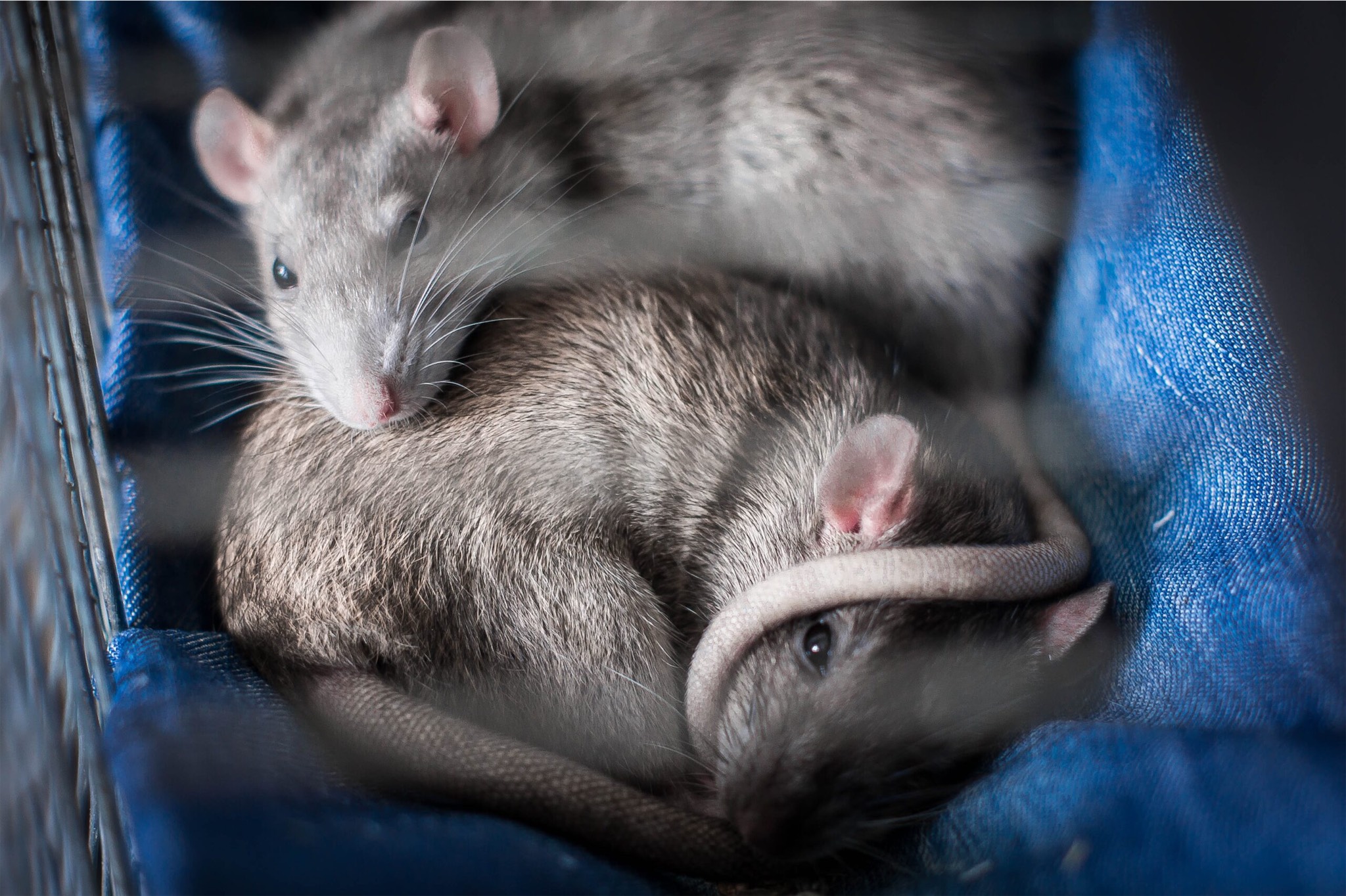The Trick To Handling A Rat Infestation In Your DC Home

Rats are a common problem in cities all across the United States. In Washington D.C., rats are an especially big problem.
Hundreds and hundreds of D.C. homeowners experience rat problems every month and no neighborhood is immune.
If you are experiencing any signs of a rat infestation, handling it as quickly as possible is important. American Pest has the information you need to know about rats in D.C.
The Problems Rats Can Cause
Except in the cases where rats are pets, rats are generally considered an animal that people want to steer clear of.
Certainly, their beady eyes and hairless tails give them an unpleasant appearance, but that’s not the real problem when it comes to a rat infestation. Rats cause many problems when they get into your DC home.
Rats Spread Disease
The most dangerous problem that goes along with having a rat infestation is that they can make your family sick. Rats spread many serious diseases in several different ways.
First, they spread illness through their waste. Rat feces contaminate food, food prep surfaces, and other areas where it lands. Rat urine can also cause illness.
Rats also spread disease through bites and scratches. Although you have to get up close and personal with them to end up with an illness due to a bite or a scratch, it has happened before, and it will happen again.
What illnesses are rats capable of spreading? A common illness that people can contract through contaminated food is salmonellosis, or what is commonly called food poisoning. Symptoms include stomach ache, vomiting, diarrhea, and fever.
Rat-bite fever is a potentially fatal illness caused by infected rats or their contaminated feces. Symptoms of this illness include fever, vomiting, muscle aches, headaches, and rashes.
Although most often known as a disease from the Middle Ages, rats have also been known to spread Bubonic plague in recent years. Swollen lymph nodes, fevers, and headaches are the common symptoms of the disease, and it is usually transmitted through the bite of a rodent-infected flea.
Hantavirus can be spread through the air in particles of rat urine, feces, or saliva.
A serious respiratory virus, symptoms progress from fatigue and muscle aches to a cough, shortness of breath, and respiratory distress. Although most home-invading rats do not carry Hantavirus, it is an extremely dangerous illness with a mortality rate of nearly 40%.
Rat infestations can also trigger allergy and asthma symptoms in some people.
Rats Damage Property
Rats are rodents, and one thing that rodents have in common is their constant need to chew. Rodent incisors never stop growing.
To keep these teeth at a manageable length, they must gnaw on things regularly. Because of this, when rats get into your house, anything is fair game for their chewing.
Your belongings will often be compromised during a rat infestation. You may find holes chewed through the sides of storage boxes in your basement or attic and the contents inside destroyed. When rats get into your pantry or cupboards, they’ll chew through boxes and containers to get at the food inside.
This not only makes a mess but also contaminates all the food inside.
Your home itself will also be damaged by rats. They will chew holes through your walls. Once they have access inside your walls, they’ll damage your insulation with their urine and feces. They’ll also use pieces of it for their nests.
Having access inside your walls will allow rats to chew through pipework, which can cause water leaks. Water leaks damage your floors, walls, and ceilings, and can also lead to mold problems. Rats will also chew through wiring, which can be a fire hazard.
Wherever rats choose to nest inside your house will suffer serious damage from their nests, feces, and urine.
Rats Introduce You To Parasites
Rats are often hosts to many different parasites. When they get into your house, they bring the parasites with them.
Parasites like fleas and ticks can drop off their rat hosts and find new hosts in you, your family members, or your pets. Intestinal parasites, such as tapeworms and roundworms, can be excreted through their waste, which your family can be exposed to from contaminated food, countertops, and more.
By introducing parasites into your environment, rats not only spread diseases directly from themselves, but also indirectly expose your family to a host of other illnesses, such as Lyme disease, babesiosis, tularemia, and more.
Rats Reproduce Rapidly
You may think that having a couple of rats get into your house isn’t that big of a deal.
Of course, you don’t want them there, and you know they’ll cause some damage, but how bad could two rats be? Unfortunately, the answer is ‘very bad’.
Female rats typically birth up to six litters every year, with anywhere from five to twelve babies per litter.
They reach sexual maturity by four to five weeks old. That means that barring any attempts to stop an infestation, if you start with two rats in your house, you could end up with over 1,200 rats after one year, with the population continuing to grow exponentially.
How To Identify A Rat Infestation
If there is any good news about getting an infestation of rats, it’s that they aren’t very good at going unnoticed. Typically a rat infestation is accompanied by several hard to miss signs of their presence.
Droppings
One of the first signs you’re likely to notice when rats get into your house is their droppings.
Rats leave droppings wherever they go, so you’re especially likely to find them on your countertops and in your cupboards as they look for food.
Rat droppings are typically dark-colored and around half an inch in length. Although similar in appearance, you can typically tell them apart from mouse droppings because of their larger size.
Holes
If you start finding jagged-edged holes in items around your house, it’s a sign that rats might be present.
This is especially true if you’re finding these holes in food boxes in your pantry or cardboard boxes in your basement or attic. Holes will be about the size of a quarter.
Gnaw Marks
Along with finding holes in things, you may find gnaw marks. Depending on the material an item is made of, rats may have a more difficult time chewing through certain things.
They may also be startled away. If you find gnaw marks, they could be from a rat.
Scratching Sounds
What’s that sound keeping you up at night? If you’re hearing scratching or squeaking sounds in your ceiling or walls, something is there.
It could be rats, mice, squirrels, or bats, but regardless of what animal has snuck inside, you’ll want to take further action to find out.
Odor
Rat urine has a very strong musky scent. It is an unpleasant odor that will quickly permeate your house if you have an infestation.
Furthermore, if you’ve had a rat infestation for a while, rats may die within your walls, leaving a stronger and stronger scent as the days go by.
Nests
Finding a rat’s nest in your house is an obvious sign of an infestation. Rats build their nests in out of the way locations, such as in basements, attics, or inside your walls.
They use all sorts of materials to build their nests. When indoors, they’ll use items they find around your house, such as pieces of cotton, fabric, and insulation.
Runways
When traveling from place to place, rats prefer to stay along the edges of walls instead of walking out into the middle of rooms.
This affords them a bit more security. As they rub up against your walls or baseboards as they walk, they’ll leave grease marks behind from their fur. These marks are commonly referred to as runways.
If you find these marks along the bottoms of your walls, it’s a sign of a rat infestation.
Pet Behavior
If you have dogs or cats who are behaving strangely, it could be a sign of a rat infestation.
Scratching or sniffing at areas under appliances or near your walls, barking or whining in a particular area and refusing to leave, and other similar behavior could be a sign that rats are sharing your home with you.
Why At-Home Rat Control Methods Often Fail
When Washington D.C. homeowners discover that rats have gotten into their house, they often try to take matters into their own hands to get them out. Unfortunately, these methods often fail for various reasons.
⭐ While you may be successful at eliminating part of your rat problem, it’s much harder to get rid of every rat that has gotten into your house. Rats are smart, and when they sense danger, they’re adept at steering clear of you and the traps you’ve set for them.
⭐ Some methods of removing rats get you too close to the rats. If they feel threatened, rats can be aggressive, and there’s a real chance of you getting scratched or bitten.
⭐ If you choose to use poisons or chemicals, you might accidentally use them incorrectly, which could be dangerous for you, your family, and your pets.
The Trick To Handling A Rat Infestation In Your D.C. Home
If you want to get rid of a rat infestation safely and completely, you need the help of pest control professionals. Not only can the experts at American Pest eliminate your infestation in its entirety, but we’ll also make sure that it won’t happen again.
We provide elimination and exclusion services. Exclusion services seal up entry points which prevent rats from getting back into your house in the future.
We’ll also offer advice on modifications you can perform to make your home less appealing to rats.
If rats have gotten into your house, contact American Pest to schedule an inspection. Our trained service professionals have the skills, knowledge, and equipment you need to eliminate your rat problem to keep your family safe and healthy. We’re here to help. Contact us today.
Request Your Pest Control Estimate
Related Posts
Contact Us Today!
Do you need an estimate for service or have questions about pests? We’d love to hear from you!
Fill out the form and receive feedback today. For immediate service, please give us a call!
